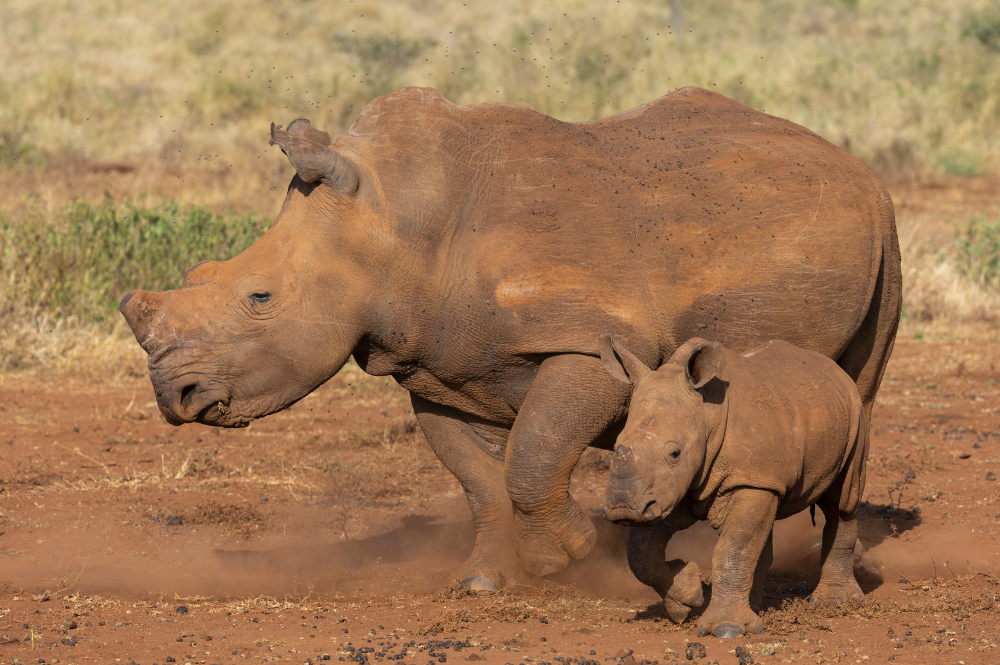New information released on World Rhino Day 2023 (22 September) by the IUCN African Rhino Specialist Group (AfRSG) shows that global rhino numbers are up, having increased to approximately 27,000 by the end of 2022. The positive trend is primarily due to rises in the number of black and white rhinos in Africa. However, numbers of the two most threatened species – the Javan and Sumatran rhinos – are dangerously low, with fewer than 80 individuals remaining of each species.
Notably, Southern white rhino numbers have increased for the first time since 2012. The latest figures revealed an estimated 16,803 individuals across Africa at the end of 2022 (compared to 15,942 at the end of 2021) showing growth of more than 5%. This positive development provides much-needed hope for the subspecies, which has faced intense poaching pressure over the last fifteen years.
Black rhino numbers continue to increase, having risen from 6,195 at the end of 2021 to 6,487 by the end of 2022, a rise of almost 5%. Biological management interventions, such as the establishment of new populations, have resulted in higher population growth rates and an increase in rhino numbers, despite concurrent increases in poaching losses.
There were 561 rhinos killed in Africa during 2022, a rise from 501 in 2021 and 503 in 2020. Whilst these numbers remain concerning, they represent a marked decline from the peak of the crisis, when 1,349 African rhinos were poached in 2015.
In India and Nepal, numbers of the Greater one-horned rhino show a marginal rise from 4,014 in 2021 to 4,018. As with the African species, biological management is key and poaching remains a serious concern.
The status of Javan and Sumatran rhinos is increasingly perilous. Official reports estimate there are less than 80 Sumatran rhinos, though there are potentially as few as 34-47 individuals remaining. The total Javan rhino population is estimated to be 76 animals and this includes 12 individuals that have not been recorded for at least three years. All remaining Javan rhinos are found in Ujung Kulon National Park and there have been signs of a rise in illegal activities in this area. Of greatest concern are reports regarding ongoing investigations by the Government of Indonesia into a recent unnatural death of a Javan rhino. Given pressing concerns for their future, the Government, and a range of partners including NGOs, are working together to protect and recover both species.
“On World Rhino Day it is important to reflect on the successes and challenges of rhino conservation globally,” stated Dr Jo Shaw, CEO of Save the Rhino International. “We are reassured to see long-term investment into collaborative conservation actions result in increased numbers of white, black and Greater one-horned rhinos. Similar interventions must be amplified to continue to address the critical situation facing Javan and Sumatran rhinos. We remain steadfast in our commitment to the future of all five rhino species.“









